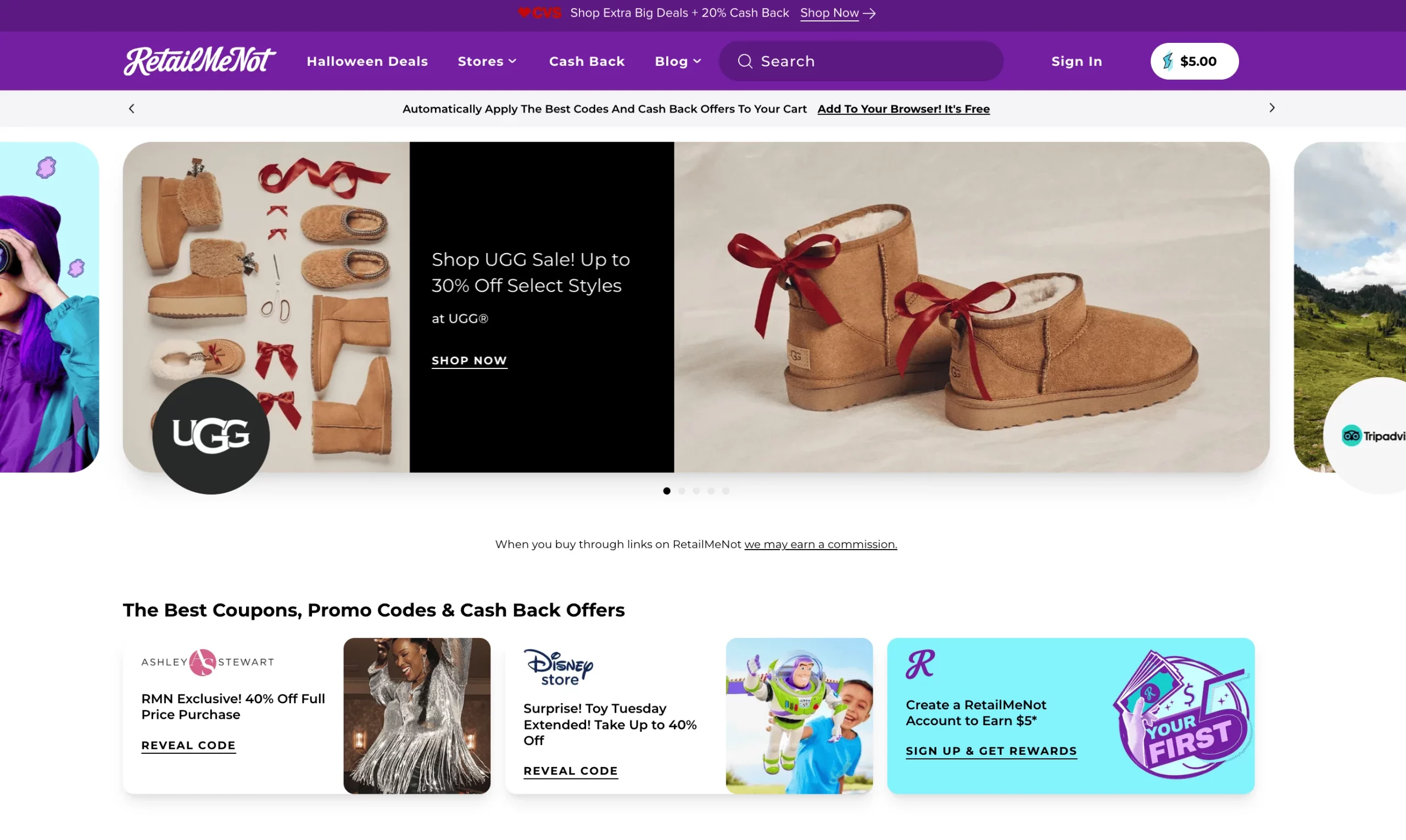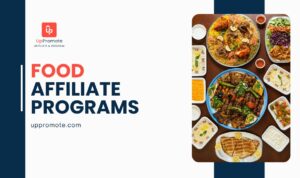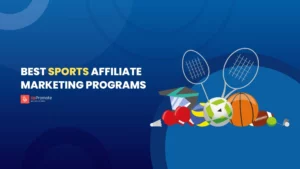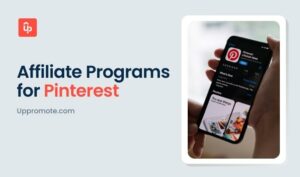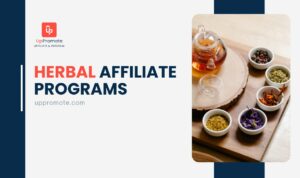You’ve decided to enter affiliate marketing and created your own campaign through affiliate program software in the hope of boosting sales and raising brand awareness. The next crucial step is to find and invite affiliates to join your team.
But wait a minute! Don’t you think all affiliates are the same?
Actually, the answer is not. Affiliate types vary. Each has its own strategy for attracting customers and driving sales to your store.
So, what are they? And how can you find affiliates and choose the right types to work with?
Don’t worry; we’ve got you back.
This article will help you get to know more about 13 common types of affiliates:
- Bloggers
- Existing customers
- Social media influencers
- Review sites
- Loyalty and cashback sites
- Coupons and deals sites
- Comparison sites
- Wishlist collection platforms
- Email/ Newsletter affiliates
- Podcasters
- Video affiliates
- PPC affiliates
- Mobile app affiliates
Further, we also show you how to pick the ideal partners, effective ways to connect with them and the best tips to monitor different kinds of affiliate marketers.
Want to partner with various types of affiliates and manage them easily? Check out UpPromote, the #1 Shopify affiliate software trusted by experts and over 115,000 global customers, to simplify the process.
Tailor distinct programs for different affiliate groups with UpPromote.
13 Common Types of Affiliate Partners with Examples
Affiliates come in many forms. Understanding the different types of affiliate marketers will help you learn how they operate to promote products for brands, making it easier to recruit the best partners for your affiliate campaigns.
Here’s the list of 13 affiliate types that you should know before starting your recruitment plan:
1. Bloggers
Who they are
Bloggers are individuals who write regularly for their own websites on specific topics or niches, such as fashion, technology, finance, travel, and more.
Such people have built a loyal audience over time by sharing valuable insights, experiences, reviews, and advice.
How they promote your products
Bloggers who sign up for an affiliate program will take charge of advertising products from a brand. They will make people aware of its existence through writing and intelligently setting affiliate links within their blog posts.
Their types of content range from in-depth product reviews to how-to guides and tutorials, including listicles.
A real-world example
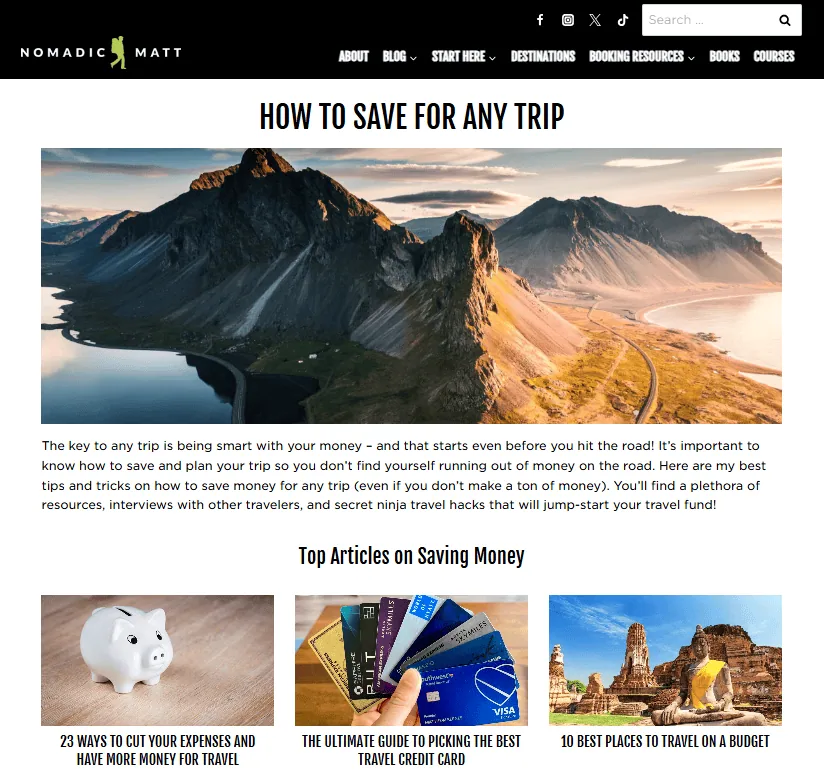
Nomadic Matt is a renowned travel blogger. He regularly posts helpful tips, guides, and resources to travelers on a shoestring budget.
In his content, he frequently highlights affiliate links for travel gear, booking platforms, and insurance providers. Sharing personal experiences along with laid-back advice helps him to promote these products in a way his readers can genuinely identify with.
2. Existing Customers
Who they are
It’s surprising that your own customers can be powerful affiliates, isn’t it?
Because they previously purchased and used your products or services, so they know what you offer. If they’re happy with their experience, they can become enthusiastic advocates for your brand.
The amazing truth is that around 92% of people would trust recommendations from their friends or family rather than advertising. Imagine having your customers refer some friends to your store and replicating at scale. Sounds cool, right?
So, don’t ignore your existing customers under the umbrella of affiliate marketing. Their genuine appreciation and familiarity make them trustworthy voices when recommending your products to others.
How they promote your products
It might leave you asking, in what ways are my customers talking about my brand and products?
This is what they can do:
- Join the referral program and then obtain unique referral links or codes to promote products with others.
- Leave reviews or testimonials, sharing positive experiences with friends, family, and colleagues.
- Make user-generated content, for example, unboxing videos, product reviews, or lifestyle posts centered around your products.
A real-world example
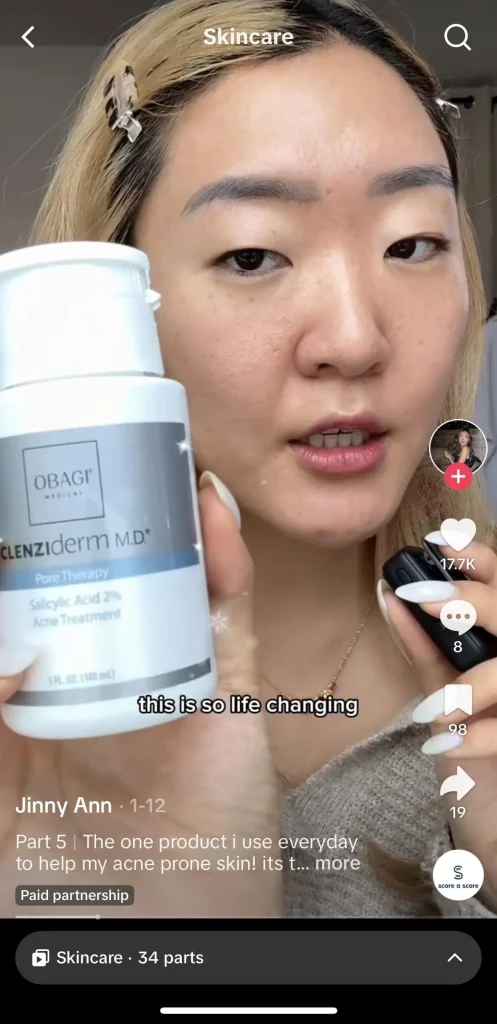
A customer review of Obagi’s Pore Therapy has been creating a lot of excitement around the product. It was so positive that the brand immediately shared it on their social media accounts.
To keep customers spreading the word, Obagi created a refer-a-friend program. With this campaign, the brand encourages existing customers to share their love for its products with friends. Both the referrer and the referee get a special discount on their next purchase.
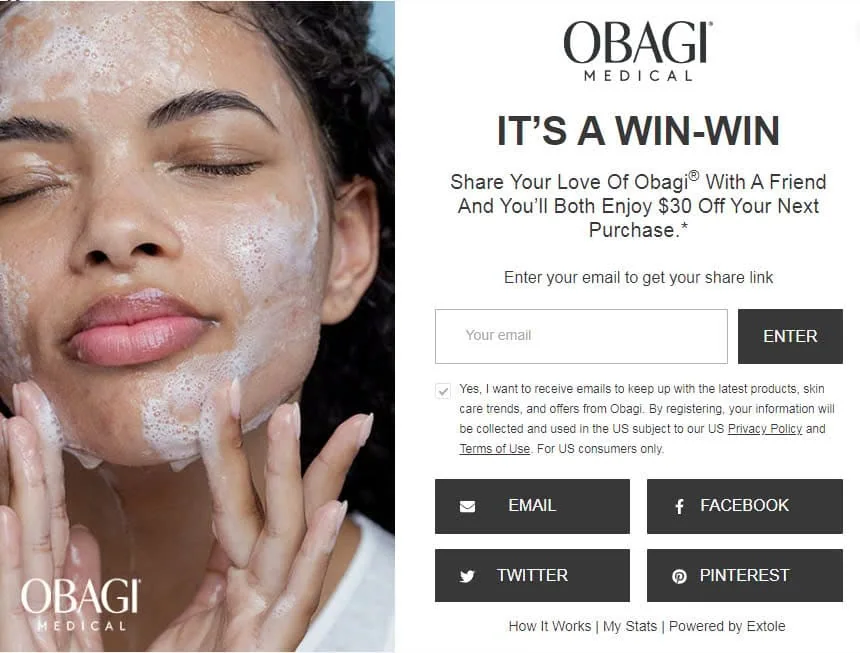
Want to adopt Obagi’s strategy to convert happy customers into affiliate partners?
Try UpPromote, the robust referral software on Shopify, to build your refer-a-friend program for free right away.
There are 2 options available to showcase your offer to customers:
- Landing page
- Widget
Landing page
You can embed a signup form on any page within your store. Then, your customers can quickly find your referral program to register and get their referral link to push your products.
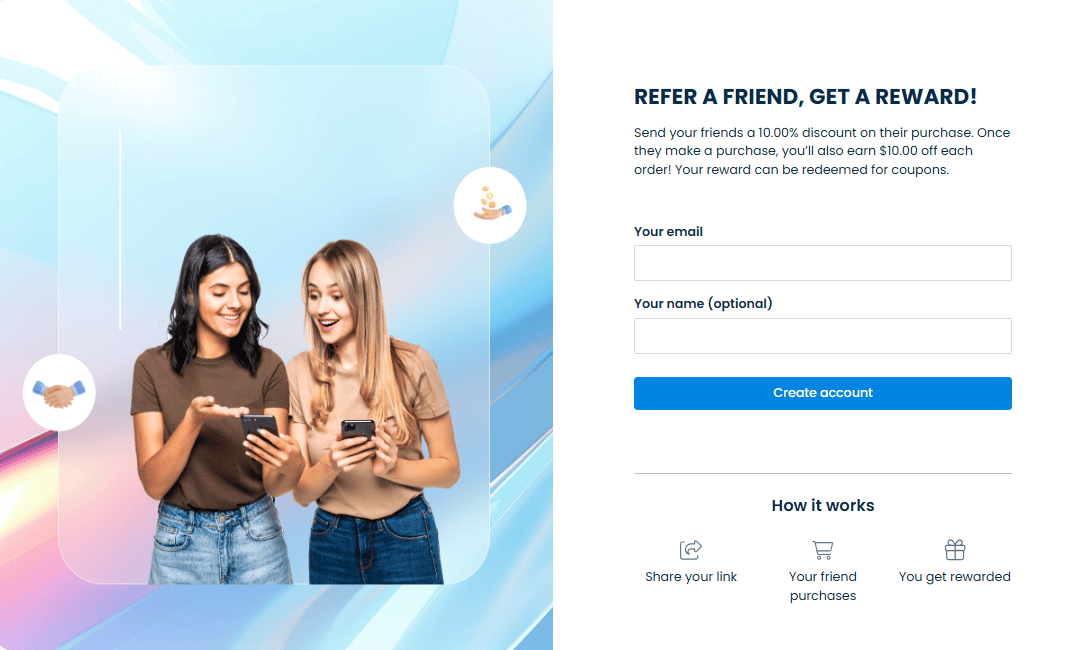
Widget
It appears as a floating button on your website. As clicked, it opens a popup where customers can sign up for your referral program and receive their unique referral link.
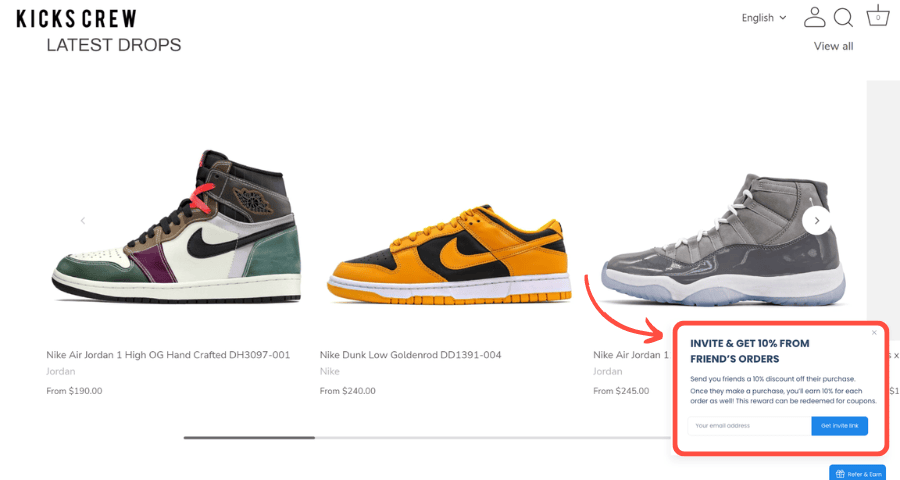
3. Social Media Influencers
Who they are
Influencers are perhaps the best-known types of affiliates. These are people who have a massive audience coupled with authority on social media such as Facebook, Instagram, TikTok, and X.
Based on the number of followers, four popular levels of influencers are:
- Mega-influencers: Have a million followers and above and are often referred to as celebrities
- Macro-influencers: Ranging from 100,000 to 1 million followers
- Micro-influencers: Usually fall in the range of 10,000 and 100,000 followers
- Nano-influencers: Have 1,000 to 10,000 followers
How they promote your products
As soon as joining an affiliate campaign, here’s what influencers would do:
- Produce engaging content like stories, videos, or posts with affiliate links or discount codes.
- Add a link in bios to showcase all the products they’ve used for easy access.
- Run giveaways or contests to increase engagement and visibility.
- Host live streams and Q&As to connect with fans, answer questions, and promote products.
A real-world example
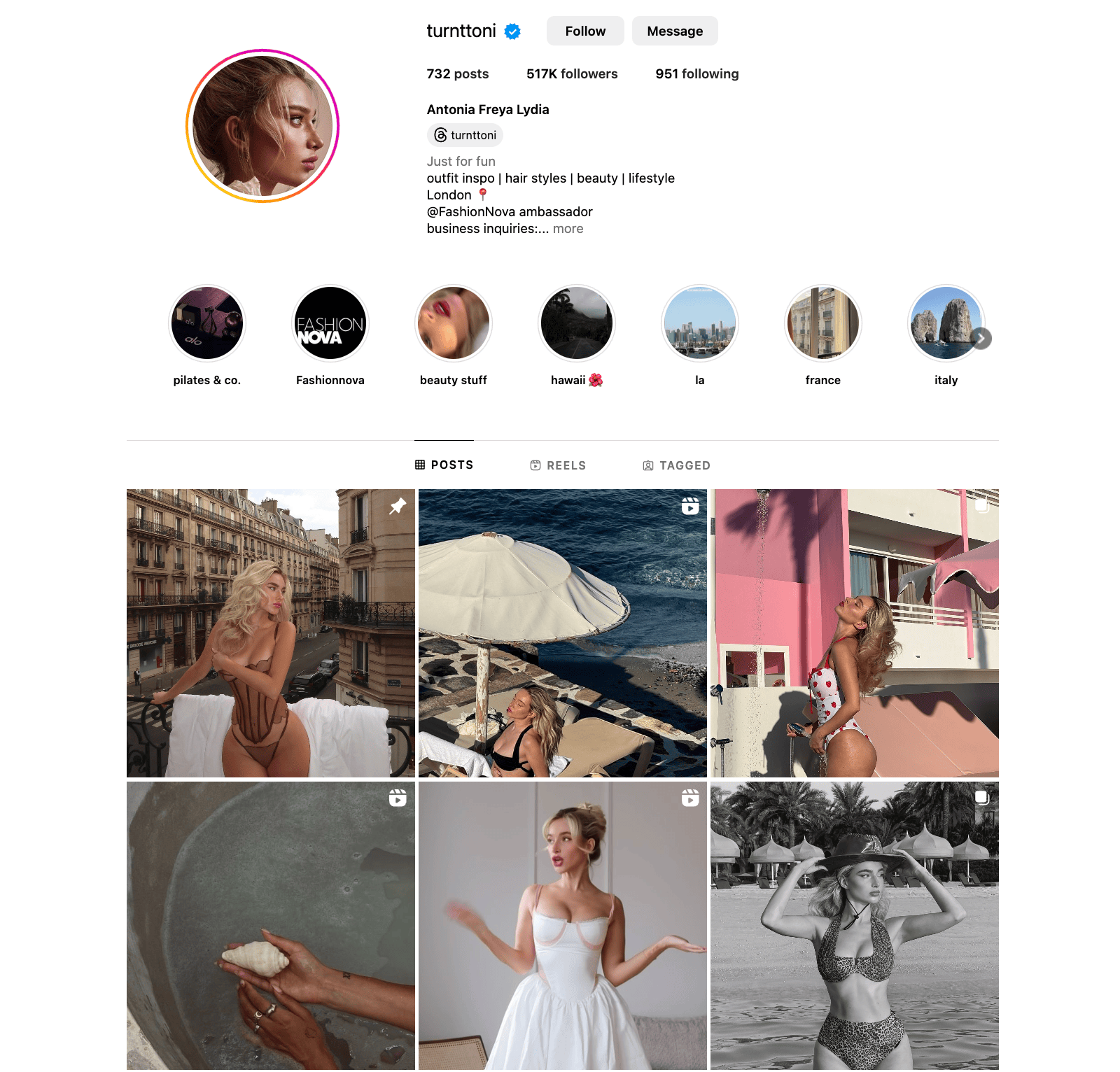
Antonia Freya Lydia is a famous model and social media macro influencer. She is best known for her Instagram presence under the handle @turnttoni, with over 500,000 followers. Antonia’s content focuses on offering her fans style inspiration, beauty and travel tips.
She is now partnering with FashionNova. So, she usually shares stories, videos, or posts with affiliate links or coupon codes to promote the brand’s fashion collections.
4. Review Sites
Who they are
These are online platforms that have specialized in offering reviews and ratings of various products and services across many different niches.
The products and services have, generally speaking, been bought, vetted, or utilized by the editors themselves or other consumers. So, such reviews are trusted sources of consumers for detailed, unbiased information before making purchase decisions and drive organic content creation for brands.
How they promote your products
Adding review sites to your affiliate team can boost your product visibility and sales by:
- Publish detailed reviews highlighting your product’s features and benefits.
- Mention your products in “editor’s top picks” or “best of” lists to sway consumer preferences.
- Place affiliate links in content to direct readers to your website.
A real-world example
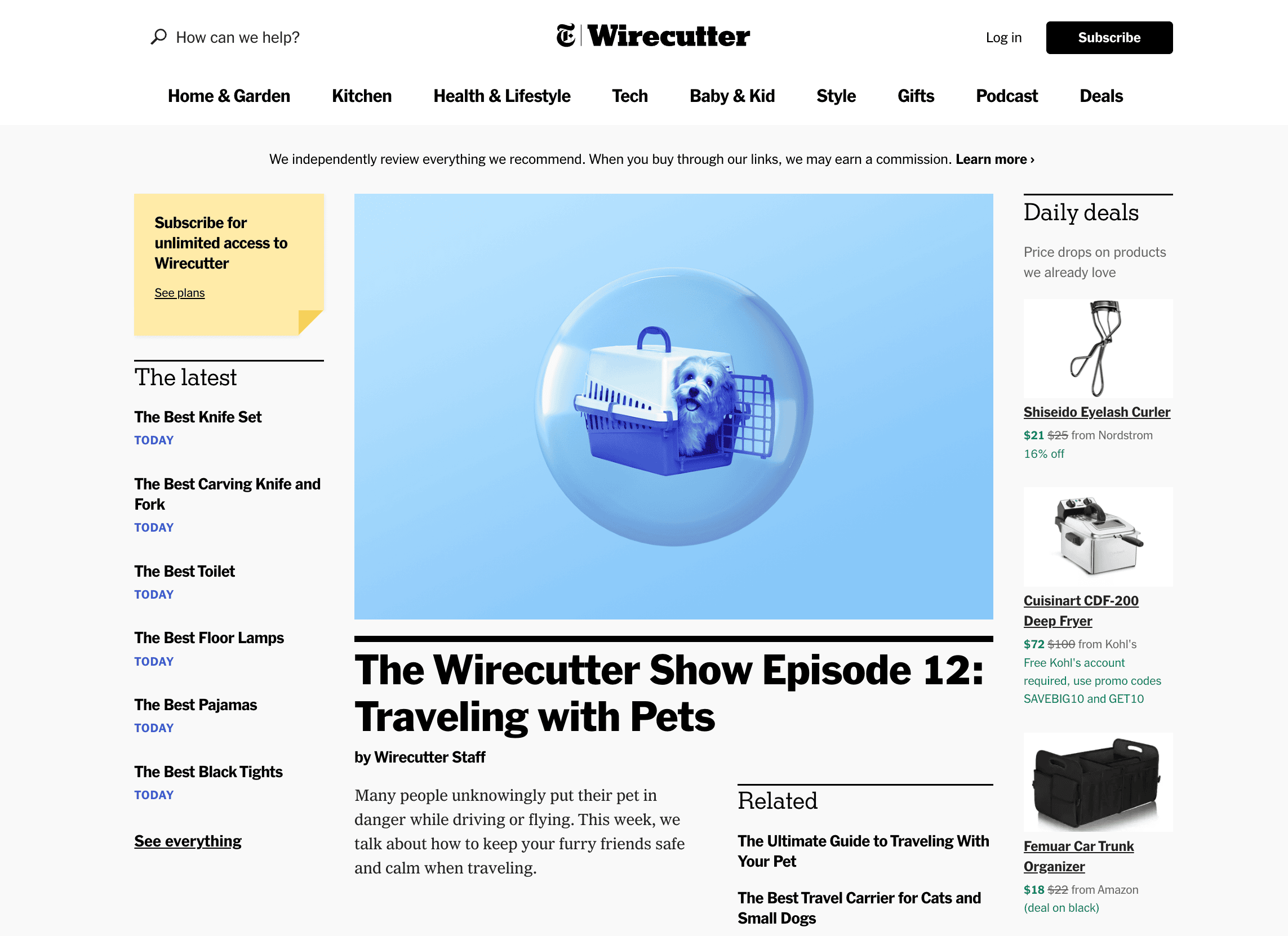
Wirecutter is a product review website and a part of the New York Times. They offer research-driven, in-depth recommendations for various consumer goods.
Wirecutter earns money through affiliate links, but that does not affect the editorial process.
Their reviews are unbiased, reliable, and catered to the needs of everyday consumers.
5. Loyalty and Cashback Sites
Who they are
Loyalty and cashback websites reward customers for shopping through them with cashback, redeemable points, or other incentives.
These websites work with many online retailers and often give away some of their commission to their audience when they purchase using their affiliate links. So, they normally attract a large number of users who love saving money or getting rewards from regular buying.
How they promote your products
Loyalty and cashback sites promote your products by:
- Offer customers a percentage of their purchase back when they buy through affiliate links.
- Allow customers to earn points or rewards redeemable for future purchases, boosting customer retention.
- Feature your products in special promotions, seasonal sales, or exclusive offers.
- Notify subscribers about time-sensitive deals, flash sales, or increased cashback rates.
A real-world example
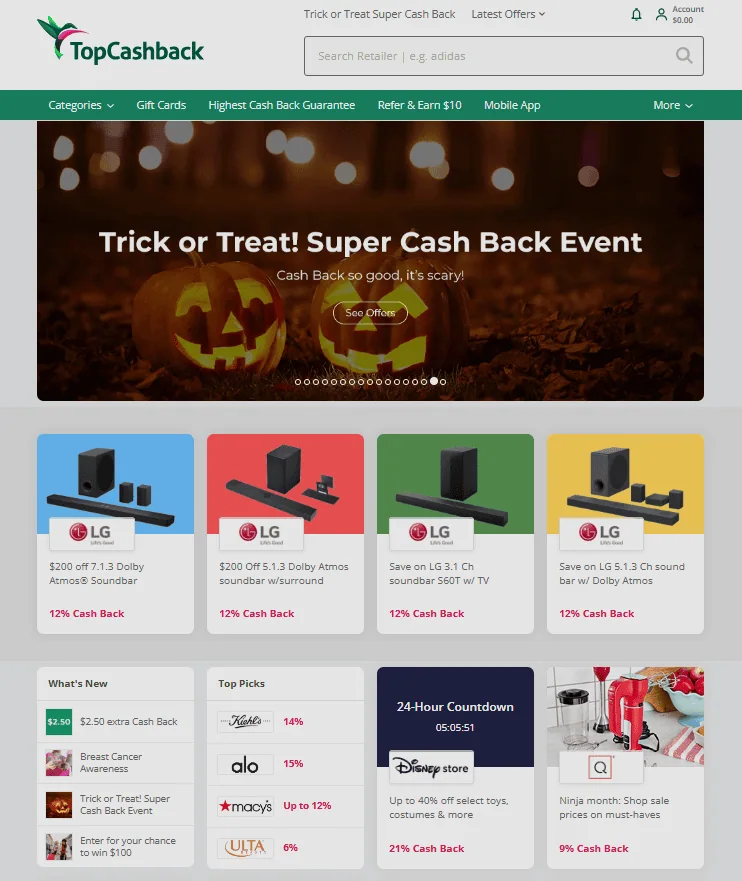
TopCashback is one of the favorite cashback websites. The platform partners with thousands of retailers and gives users a percentage of their purchases back as a reward. Users can withdraw their cashback via bank transfer, PayPal, or gift cards.
6. Coupon and Deal Sites
Who they are
Such sites gather different discounts, promotion codes, and other special offers from various retailers and brands to satisfy the needs of bargain hunters.
Featuring verified and current coupons, they are the go-to sources for shoppers looking for the best available deals.
How they promote your products
If including these sites in your affiliate team, they can assist in driving more sales to your store by:
- Feature active coupons and hot deals prominently on their websites to attract budget-conscious shoppers.
- Send regular newsletters highlighting the latest deals, including your offers.
A real-world example
RetailMeNot is among the largest coupon and deal sites. It showcases all of the available promotions from thousands of retailers across various industries.
7. Comparison Sites
Who they are
Comparison websites are where people go to compare the prices of multiple items from different brands or providers side by side. They normally present detailed information on features, prices, specifications, and customer reviews.
Thanks to all the key details in one place, consumers can quickly identify the best value or product that meets their needs before making a purchase.
How they promote your products
When joining an affiliate program, comparison sites can use the following tactics to help brands increase sales:
- Highlight your products in comparison charts, showcasing key features, prices, and specs.
- Use search filters like price, features, or ratings to help users find your products easily.
- Embed affiliate links that direct users to your website or online stores.
- Create content like articles, guides, or videos to recommend your products.
A real-world example
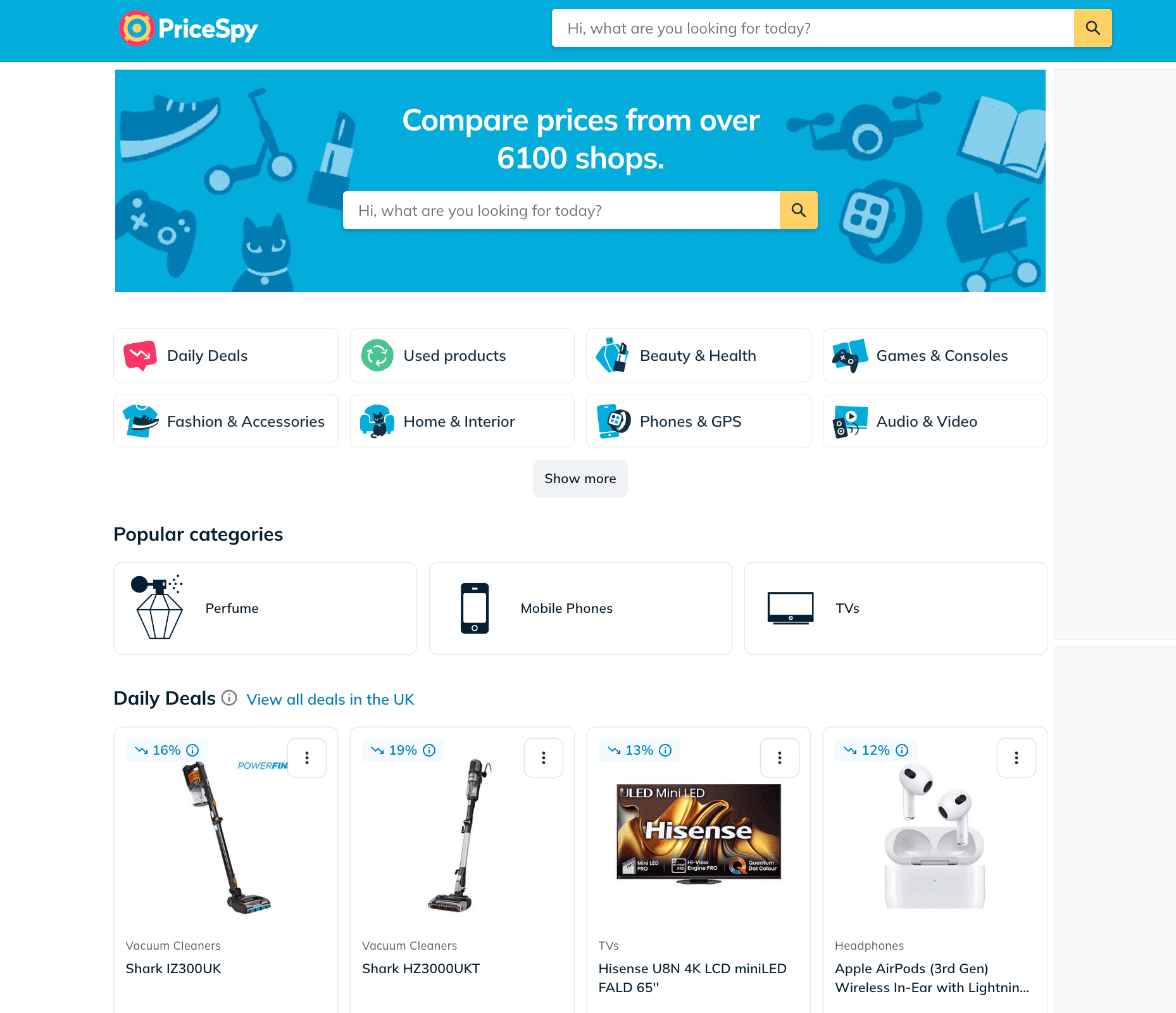
One of the great comparison sites is PriceSpy. The platform is especially popular in regions like the UK, Sweden, and New Zealand.
PriceSpy enables users to find the best prices among retailers, track price changes, and check product reviews.
8. Wishlist collection platforms
Who they are
They are online services or applications that let users write lists of what they want or gift ideas (for Christmas, birthdays, weddings, etc.)
Thanks to these platforms, consumers can save items from various retailers in one centralized location, often with the ability to organize, categorize, and share these lists with friends, family, or the public.
That is to say, once shared, others can see what’s on the list and click a link to go through and purchase something.
How they promote your products
- Users add your products to wishlists or event-specific registries, boosting visibility among potential gift buyers.
- Organize gift exchanges where participants choose from suggested products, including yours.
- Feature curated recommendations and trending items to put your products in front of users seeking gift ideas.
A real-world example
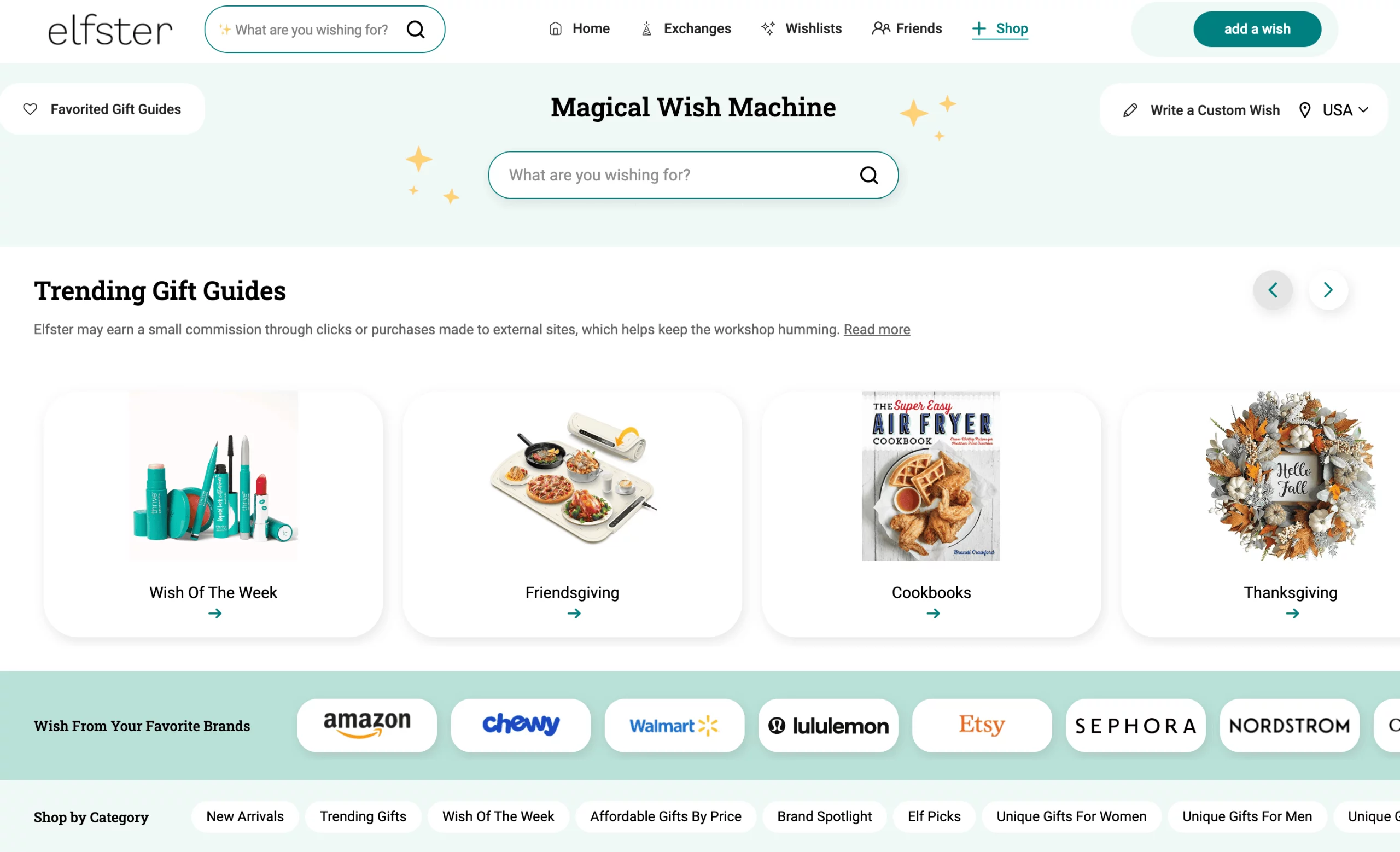
While Elfster has commonly been used to write lists for your Secret Santa, it also has other options for other special events or holidays. You look for what you want, and it gets added to a list. Then, people can click the link and purchase directly.
9. Email and Newsletters Affiliates
Who they are
These publishers have built up their own subscriber lists around their particular niches. They focus on creating emails or newsletters and sending them to the people in these lists on a set schedule (1-2 times a day, week, or month).
How they promote your products
Once email publishers join your affiliate program, they can help boost your brand’s sales through:
- Send product-focused emails with detailed info, benefits, and a clear call to action.
- Add your product to regular email newsletters to market them to active subscribers.
- Promote your products in holiday or seasonal-themed emails to capitalize on timely interests.
A real-world example
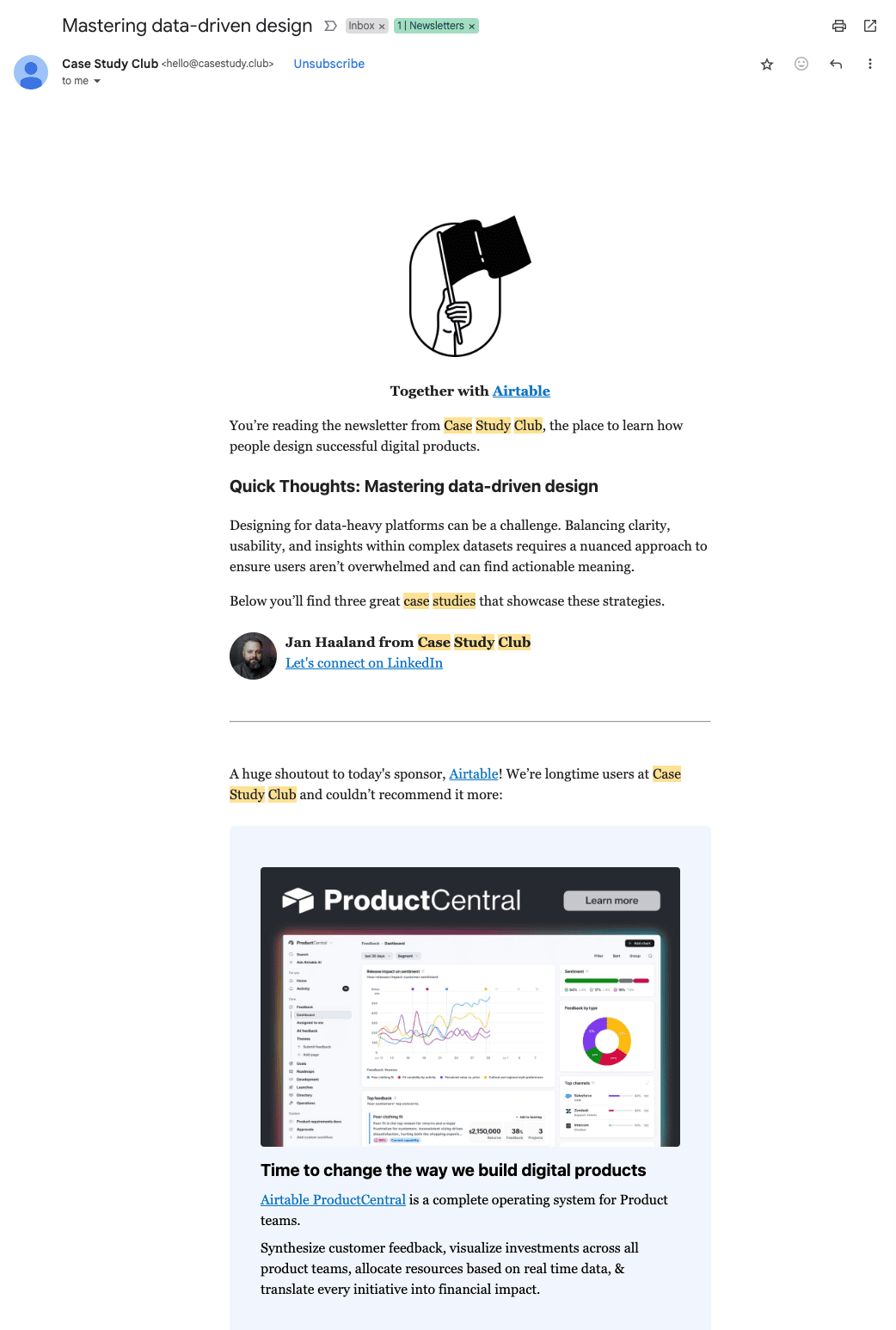
Case Study Club is a great example of this affiliate type.
They send a free weekly newsletter. The content focuses on how digital products are designed, with real-world case studies, tips, and examples that inspire designers to improve their skills.
Case Study Club usually adds affiliate links within the newsletters to promote some relevant products. Like the way they introduced AirTable above.
10. Podcasters
Who they are
Podcasters make audio programs available for streaming or downloading over the Internet. They cover a wide range of topics, such as technology, business, health, entertainment, education, and niche interests.
Podcasts have been gaining popularity lately because of their convenience and the ability to consume content on the go. Many podcasters have built themselves loyal listeners who regularly tune in to their episodes. As of 2024, there are around 4.25 million podcasts worldwide, with over 504.9 million people listening to them.
How they promote your products
Podcasting is now a great way to share stories and connect with others. As skilled storytellers, podcasters can easily present your brand and products. Here’s what they can do:
- Mention your products naturally during shows, discussing features, benefits, and experiences.
- Invite niche guests to discuss your products during episodes.
- Seamlessly integrate host-read ads to keep listeners engaged.
- Provide affiliate links or discount codes in the episode description.
A real-world example
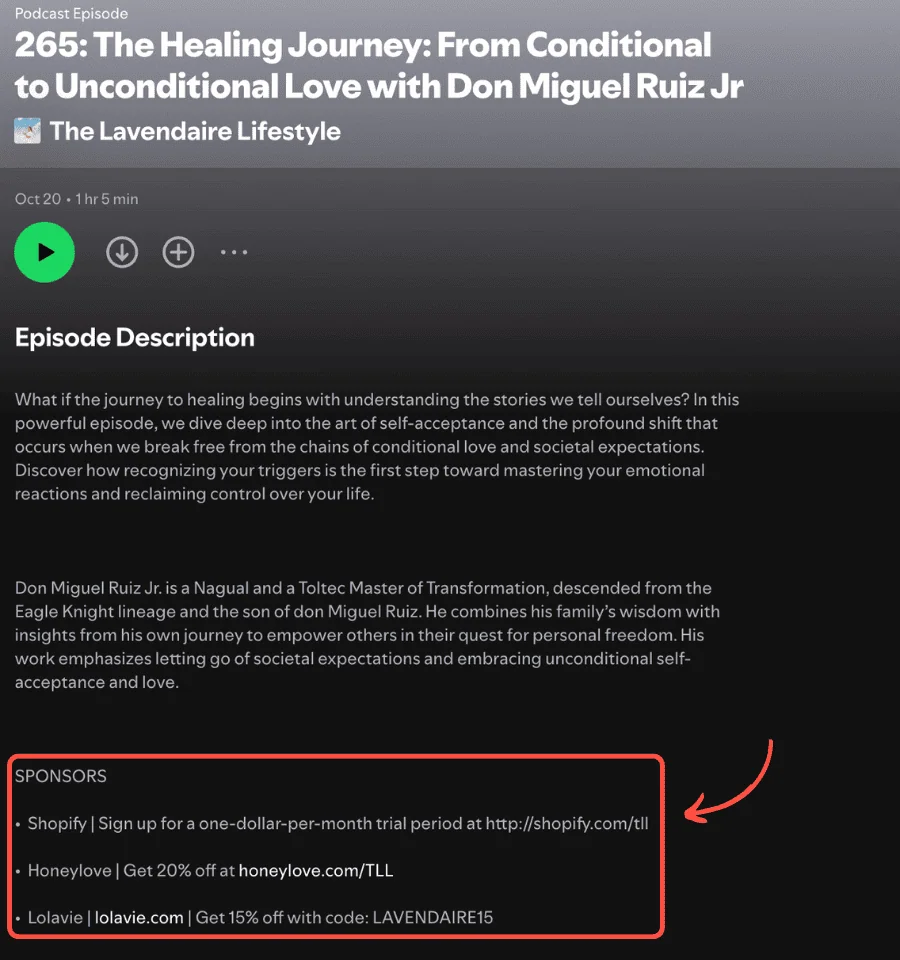
The Lavendaire Lifestyle is a popular podcast hosted by Aileen Xu. This channel inspires people about personal growth and lifestyle design.
Through expert interviews and her personal reflections, Aileen offers practical advice to help listeners enhance their well-being. Sometimes, her fans can also find her affiliate links or affiliate coupon codes according to her suggestions.
11. Video Affiliates
Who they are
Individuals creating video material for YouTube, TikTok, Vimeo, Instagram Reels, and other video-sharing services are classified under this category.
They focus on creating engaging videos that entertain, teach, or share helpful info on specific topics like tech, beauty, gaming, travel, lifestyle, and more.
With eye-catching visuals within their content, they easily draw in a large number of followers.
How they promote your products
Just think about it: Have you ever seen a YouTuber talking about a product, followed by “You can find the link in my description box below”? That’s video affiliate marketing in action!
Actually, this type of affiliate has different tactics to promote your brand and products:
- Make reviews or unboxing videos highlighting features and personal experiences with the product.
- Do how-to guides showing the practical use of your items.
- Add affiliate links or coupon codes in the video description or pinned comments to direct viewers to your store.
A real-world example
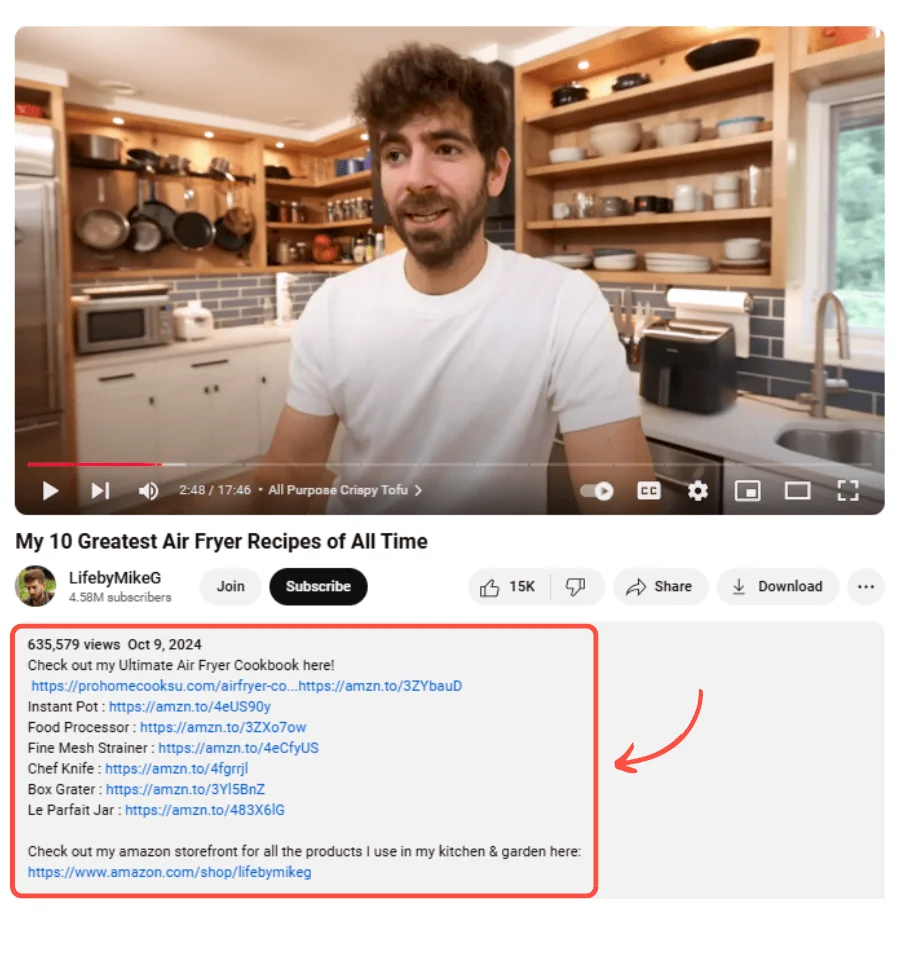
LifebyMikeG is a YouTube channel of Mike Greenfield, a home cook and video content creator.
He enjoys sharing recipes as well as kitchen tips to help people improve their cooking skills. With engaging videos, his channel has attracted over 4 million subscribers.
And, of course, he also often adds affiliate links for the kitchen and home tools he uses in the description section of his episodes.
12. PPC Affiliates
Who they are
PPC affiliates (also known as search affiliates) are marketers who run paid advertisements to affiliate products or services. Most of them invest out of pocket in creating and managing ad campaigns using search engines such as Google Ads and Bing Ads.
In return, the goal is to push targeted traffic to the merchant’s website to make money through commissions for sales or leads transacted. PPC affiliates are good at keyword researching, bid managing, ad copywriting, and conversion optimization to make the most of their ad spend.
How they promote your products
PPC affiliates can promote your products through several effective strategies:
- Bid on relevant keywords to target users in search results.
- Use display ads in ad networks to reach a broader audience based on demographics or interests.
- Run retargeting campaigns to remind previous visitors to complete a purchase.
- Make compelling ad copy and optimized landing pages to improve CTR and conversion rates.
A real-world example
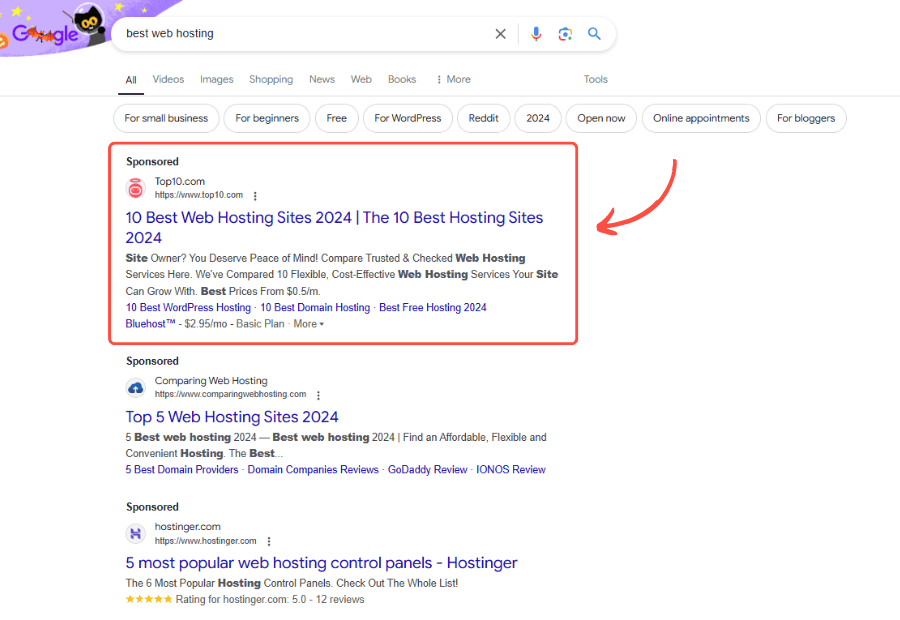
Take Top10.com as a good example of this affiliate type. The site usually runs paid ads to push 10 best products & services across a wide variety of categories.
To better understand how it works, input a query on Google, such as “best web hosting.” You’ll see the site use the ad scheme to let its content appear on the SERPs.
13. Mobile App Affiliates
Who they are
In most cases, these affiliates are application developers who provide a friendly user platform or a game and then use that to promote products or services.
There is an increase in mobile device users. So, mobile affiliates target users who like to browse the internet, shop, and use content on their mobile phones. They know how mobile usage works and strategize to enhance engagement and increase mobile conversions.
How they promote your products
If you collaborate with mobile affiliates, they can help boost your product sales through:
- Run in-app advertising to introduce your products to their users
- Using push notifications – little messages that pop up on the phone screen from time to time, reminding engaged users about your products, sales, or special events.
A real-world example
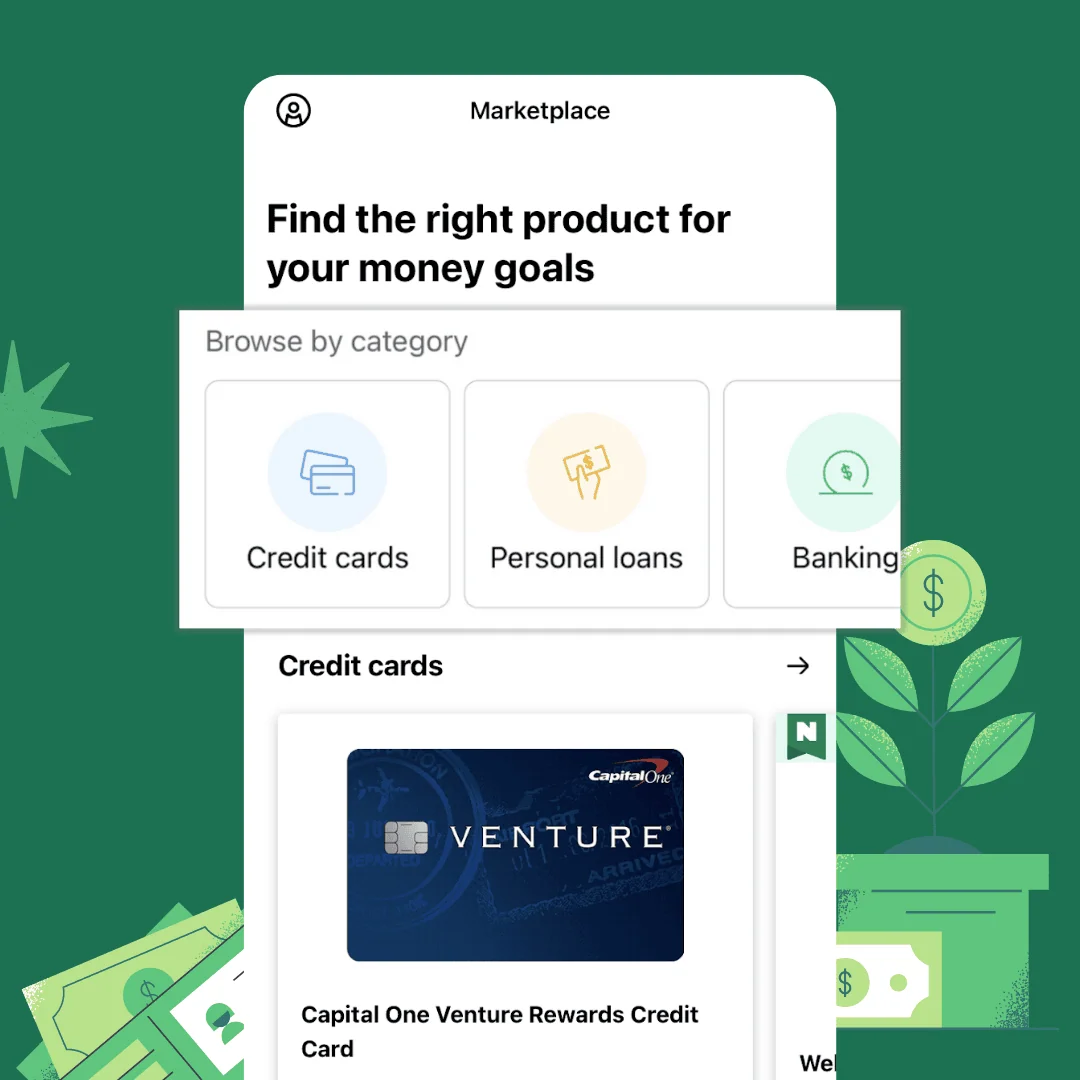
A great example is the NerdWallet app.
It equips consumers with tools, resources, and expert advice on how to make better decisions with money. Through this, much of its revenue has been generated via advertising.
But it also makes more money from its affiliations with financial institutions. For example, its marketplace suggests credit card vendors-yes, they do get commissions if you apply for a credit card through one of their links!
How to Choose the Right Affiliate Types in Your Niche
The truth is that different industries have unique audiences, products, and sales cycles. So, selecting affiliate types that fit your niche is important to enhance the effectiveness of your affiliate campaign.
These are some ideas on how industries can give preference to certain affiliate types:
E-commerce and retail
These brands should partner with affiliates who produce high-quality visuals and specialize in promoting hot deals for holidays or special events. The affiliate types they should give priority to are:
- Coupon websites: Attract price-sensitive shoppers looking for discounts and promotions.
- Loyalty and cashback affiliates: Encourage repeat purchases by offering customers generous incentives.
- Social media influencers: Fashion, beauty, and lifestyle influencers can showcase products to engaged followers.
- Review sites: Create in-depth reviews that help customers make informed purchasing decisions.
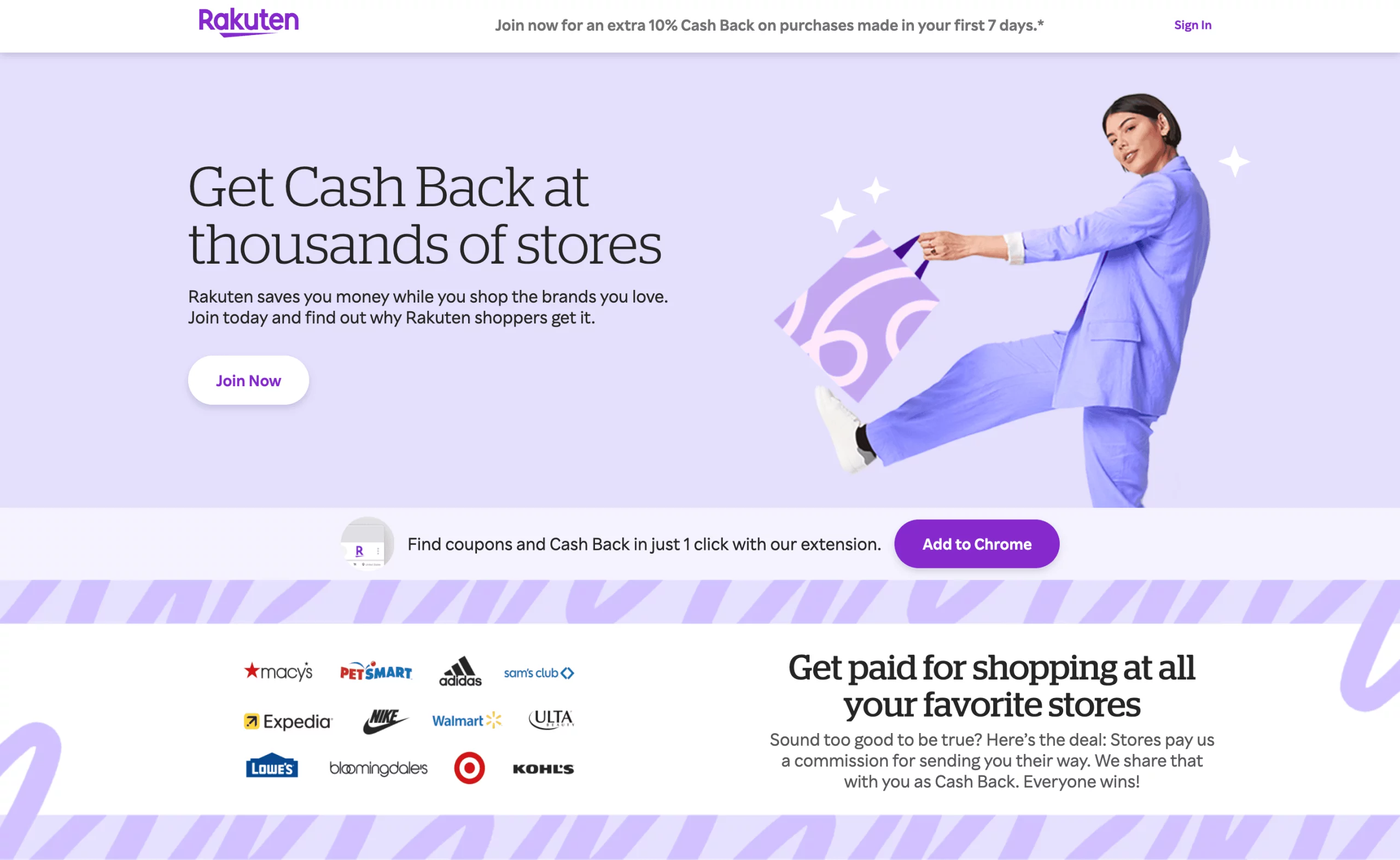
Technology and software
The prioritized affiliates of this type of business could be:
- Comparison sites: Help potential customers evaluate software options side by side.
- Bloggers (Tech Bloggers): Offer detailed reviews and tutorials to show the outstanding features and benefits of tech gadgets or software.
- Video affiliates (such as Youtubers): Make high-quality videos to demonstrate the practical uses of tech devices, especially suitable with smartphones or cameras.

Travel and hospitality
To attract travel enthusiasts more easily, such brands should look towards affiliates that can communicate the essence of the travel experience. In this case, their ideal types of affiliates might include:
- Travel bloggers and vloggers: Share personal experiences and reviews of destinations and services.
- Comparison and booking sites: Summarize choices of accommodations and flights to facilitate customer selection.
- Social media influencers: Showcase destinations through engaging visuals on platforms like Instagram or Facebook.
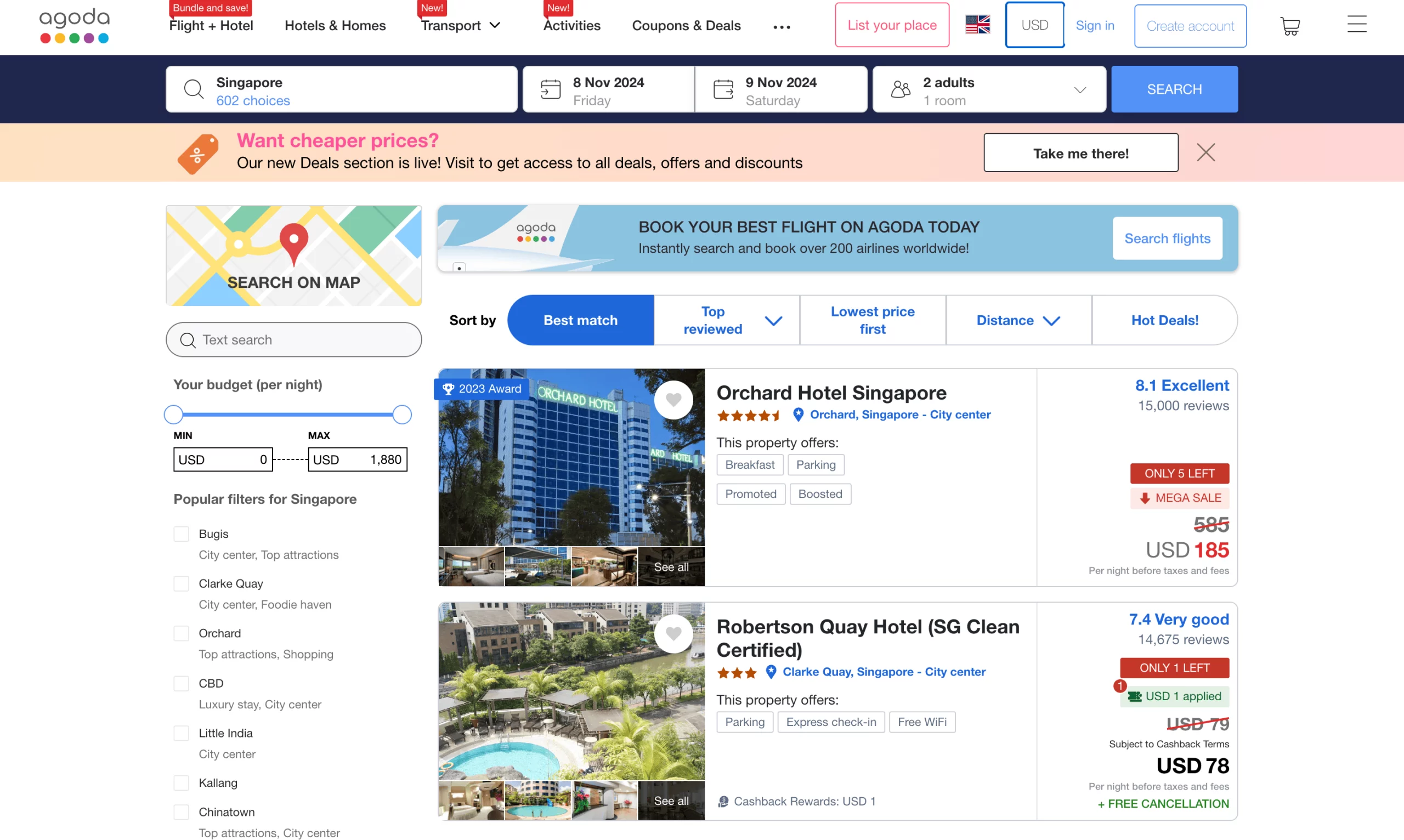
Health and wellness
The affiliate categories they should focus on are:
- Health and fitness bloggers: Offer personal stories, tips, and product recommendations.
- Podcasters: Discuss health topics and can then feature your products during their episodes along with personal experiences.
- Mobile affiliates (Health apps): Promote products within wellness apps to capture the attention of their users.
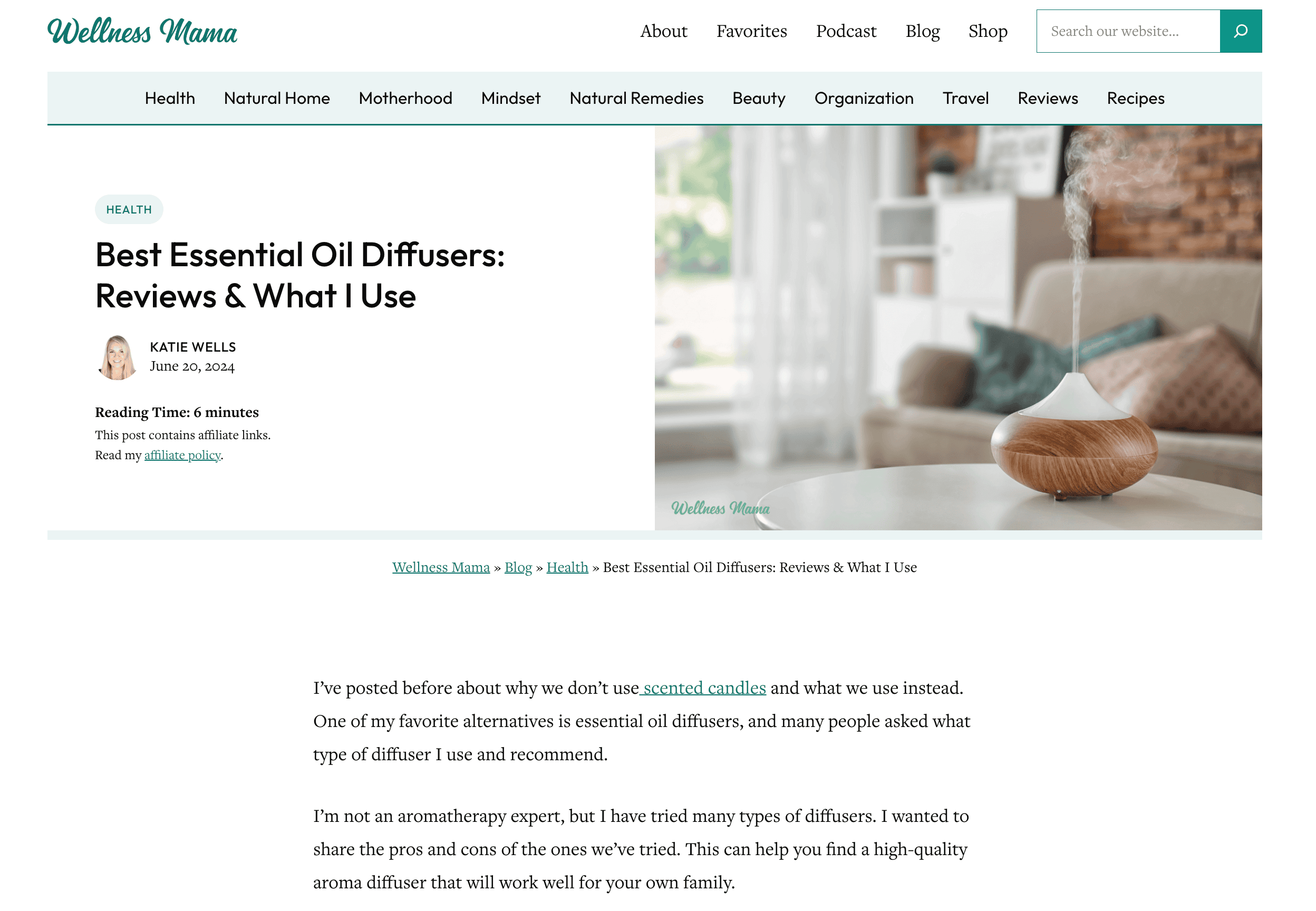
Finance and insurance
To promote products within the finance and insurance niche effectively, these companies can partner with:
- Comparison sites: Allow users to easily compare rates and services of different financial and insurance products.
- Bloggers (Financial experts): Provide reliable advice related to personal finance, such as budgeting, saving, investing, and protecting assets through insurance and other financial tools.
- Email affiliates: Send targeted emails or newsletters to specific demographics interested in financial products, offering personalized recommendations, promotions, or tips on choosing the right financial services.
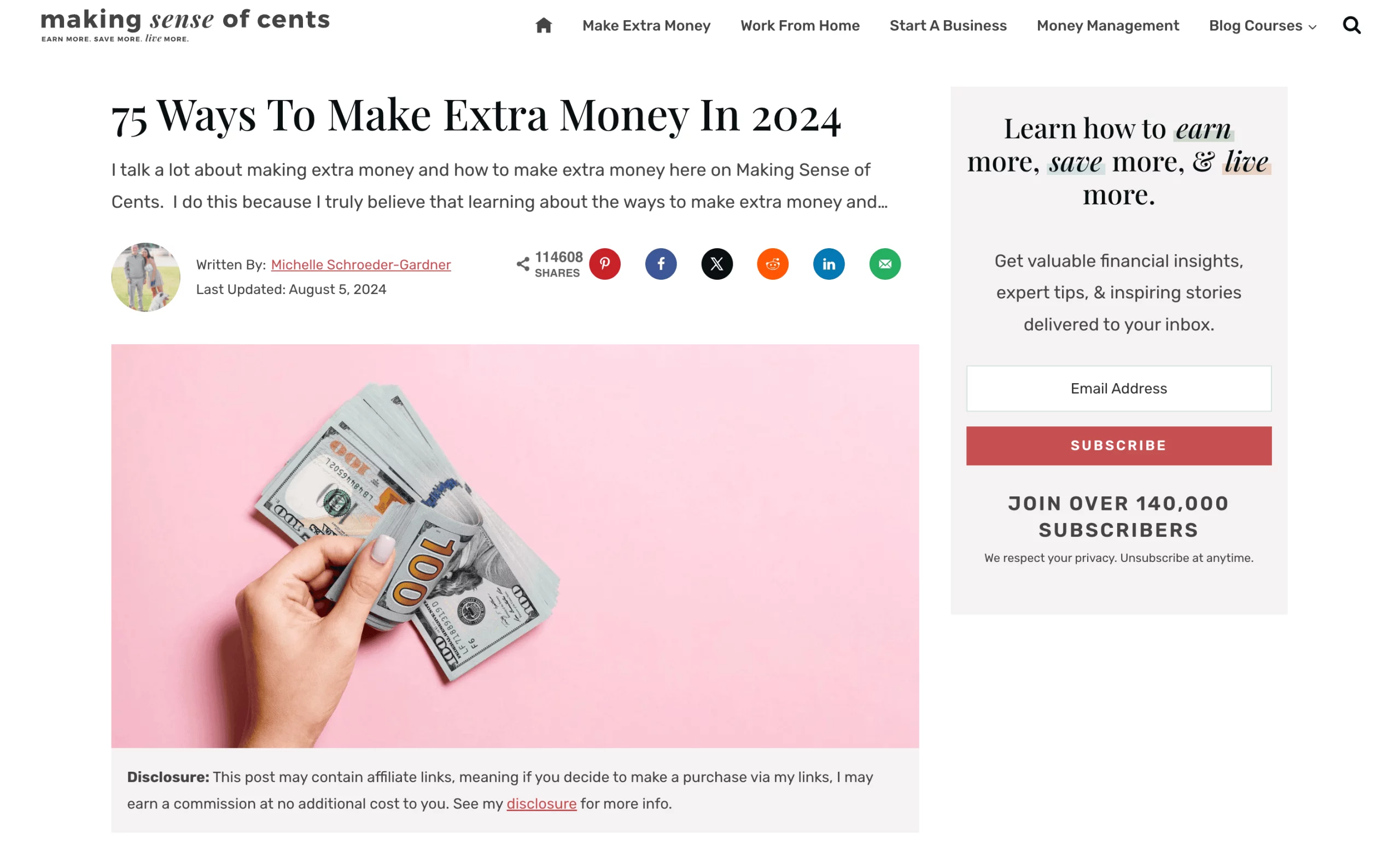
Note:
No matter what types of affiliates you are looking for, you might keep the following in mind to find one who can best represent your brand:
- Target audience match
- Niche relevance
- Strong online presence and good reputation
- High quality of content
- Good engagement rate
How to Nail Your Affiliate Outreach
After identifying the affiliate types that best align with your brand, it’s time to reach out and invite them to become your brand advocates.
Since affiliate partners vary, it’s important to use strategic and flexible approaches to connect with each type effectively.
Start Email Outreach
Using email is one of the best ways to contact your potential partners.
This communication approach is suitable for almost all types of affiliates.
To find affiliate’s email addresses, here’s what you can do:
- Bloggers and Cashback/Review/Comparison websites: Navigate to the “Contact Us” or “About Us” page located in the footer of their websites to find their email addresses or contact forms
- Social media influencers and KOLs: Check their social media bios on platforms like Instagram, Facebook, or LinkedIn for phrases such as “Contact for work” or look for email icons/links to reach out directly.
Remember to personalize your outreach message based on each type of affiliate you connect with. Address them by name and mention specific content, such as blog posts, videos, or social media posts that you particularly enjoyed or found relevant.
But don’t forget to keep your email concise and to the point. Clearly state why you’re reaching out and emphasize how the collaboration benefits them and their audience.
We crafted an email template for you to use:
Dear [Affiliate’s Name],
I hope this message finds you well. My name is [Your Name], and I’m reaching out on behalf of [Your Brand/Company Name]. We’ve been following your exceptional work on [Blog Topic/Niche] and are genuinely impressed by the insight and value you bring to your audience.
Your approach to engaging and informing your audience aligns perfectly with our brand’s vision and goals. We believe your voice would be a fantastic addition to our latest initiative, and we’d love to discuss a potential collaboration with you on [specific idea/project].
Please let us know if you’d be interested in exploring this opportunity together. We’re looking forward to the possibility of working with you!
Warm regards,
[Your Name]
[Your Position]
[Your Company]
[Contact Information]
However, let’s be honest: it often seems easier to reach out to individual affiliates like bloggers, influencers, or video affiliates than to review sites, cashback sites, or mobile app affiliates.
The reason could be that such sites and apps are typically managed by companies or firms. In this case, you might consider contacting their customer support (if possible) to help present your offer.
Connect Directly via Social Media
You may easily reach out to affiliates on Facebook, Instagram, or LinkedIn, which is especially suitable for influencers and bloggers.
However, nurturing a relationship beforehand could improve your chances of receiving a positive response to such a request.
Start following them on social media and being active with their content: like or leave meaningful comments. One may share posts and tag them properly to catch their attention.
This way, you will show real interest in their work, which will make it easier to remember your brand’s name once you move on to the next step: a proposition of collaboration.
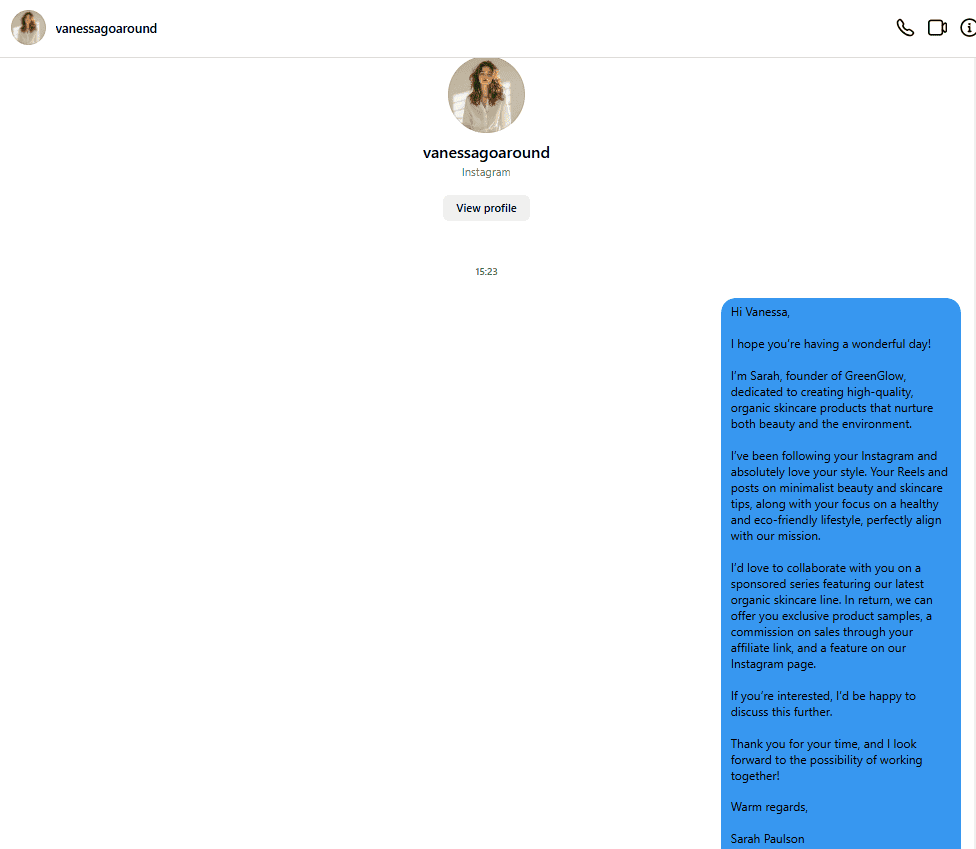
For more effective outreach, consider sending a personalized message that includes:
- A short introduction to your brand
- A recent blog post of theirs that you found insightful
- An explanation of why they would be an ideal partner for your brand
- Clear information on the collaboration proposal
- The benefits they would gain from working with you
Meet Affiliates in Person Through Events
Events are great for meet and networking with potential affiliates in person.
Different types of affiliates, like bloggers, influencers, email publishers, etc., usually attend such events to share their working experiences, stay updated with the latest market trends, and connect with peers and potential partners—and so do you.
For affiliate marketing, consider Affiliate Summit West/East, Affiliate Huddle, Affiliate World Dubai, etc.
You could also look at whether there is an upcoming specific niche event to participate in. For example, if you’re looking for travel bloggers for your travel affiliate marketing program, joining the summits and conferences of Travel Blog Exchange (TBEX) can be a great opportunity.
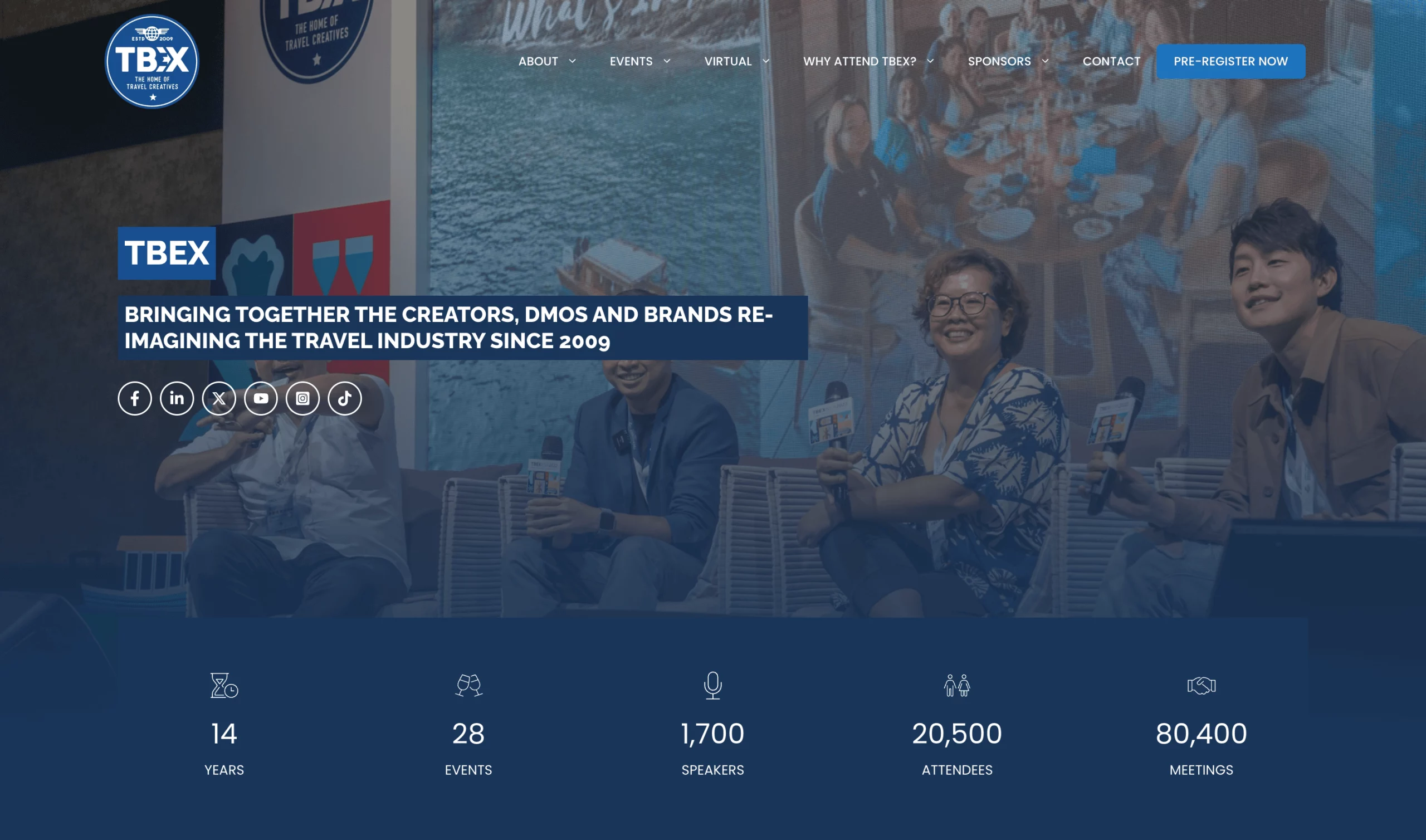
Looking for popular and trustworthy events to participate in? Here’s the way:
- Use Google keywords like “[Your Industry] Conference,” “[Your Niche] Trade Show,” or “[Your Industry] Networking Events.”
- Browse websites like Eventbrite, Conference Alerts, and Meetup for event listings
- Check industry magazines and newsletters for upcoming events
Don’t forget to check the fee of each event to set aside a budget for it.
For effective outreach to potential affiliates at events or conferences, think about doing the following things:
- If available, review the list of attendees to identify key influencers, content creators, or bloggers
- Subscribe to their blogs or YouTube channel and follow them on social media to engage with them before the event
- Consider the way you will present your band with potential partners impressively
- Prepare product samples, brochures, or media kits that showcase your brand
If you have a chance to talk to your ideal affiliate partners face-to-face, ask to exchange contact information, such as phone numbers or emails, because there could be further discussions about partnership possibilities after such events.
How to Manage Different Types of Affiliates Effectively
Yes, you want to collaborate with various types of affiliates to maximize your brand reach and drive more sales.
However, it seems overwhelming when it comes to overseeing different groups of affiliate partners at the same time.
That’s where UpPromote, a top recommended affiliate management software with a 4.9/5 rating and over 4,000 reviews on the Shopify App Store, comes in. The app will help you help you manage affiliates effortlessly.
Join 115,000+ UpPromote users to take full control of multiple affiliate types for the best results.
Create Separate Programs for Different Types of Affiliates
Once again, remind yourself that affiliates differ in experience, audience size, and marketing methods. Their results vary, too.
Consider organizing your affiliates into groups based on type or marketing platform for easier management. Then, you can create programs with custom commission structures for each segment’s contribution.
This affiliate marketing strategy is used successfully by Amazon. Amazon categorizes its affiliates into 3 distinct groups:
- Content creators, like bloggers, vloggers, and website owners, can sign up for the Amazon Associates Program.
- Social media influencers can participate in the Amazon Influencer Program.
- App developers can benefit from the Amazon Mobile Associates Program.
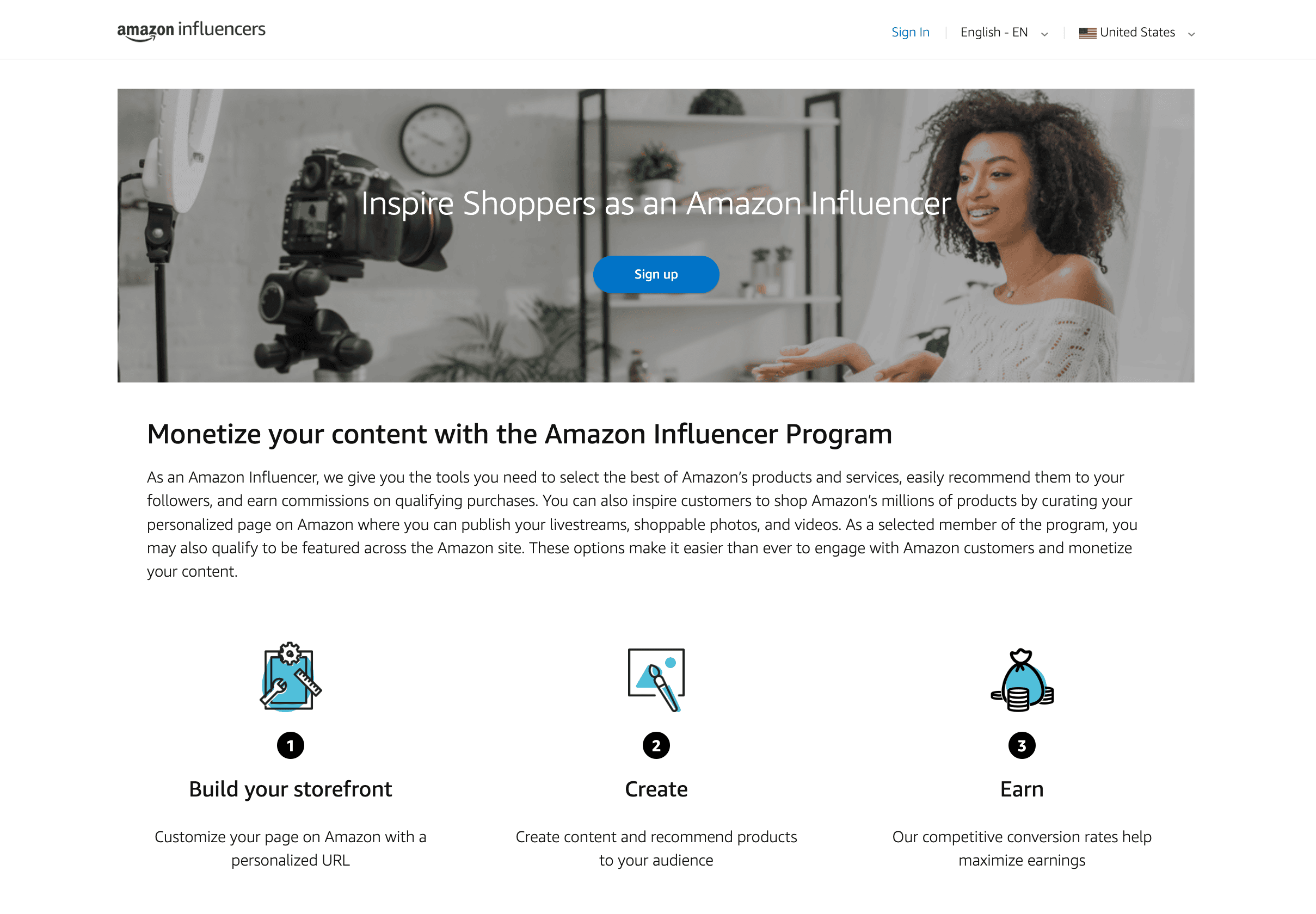
Creating and maintaining one affiliate program seems pretty simple. But, handling multiple affiliate campaigns, as Amazon has done, may be challenging.
Don’t worry! Connecting your Shopify store with UpPromote and our app will make these tasks easier for you.
Navigate to Programs > Add Program. Then, you can customize diverse programs for different affiliate groups without hassle.

Onboard and Train Affiliates Carefully
When working with different types of partners, how can you ensure that they present your brand consistently and properly?
The answer lies in creating a well-rounded onboarding process for all of your affiliate marketers.
After approving affiliates to join your program, you need to provide them with an onboarding kit that includes key information about products, branding guidelines, commission structures, and marketing material.
You should also offer your partners step-by-step guides for quick starters. Simply put, you explain to them how to use the affiliate dashboard, track earnings, and access marketing tools.
With UpPromote, you can easily give your affiliates a comprehensive guide right from the start.
Navigate to Settings > Affiliate admin > Guide page. Then, you can upload a walkthrough video, notes, or announcements for partners.
Your affiliates can see this in the Guide tab of the affiliate dashboard after signing in.
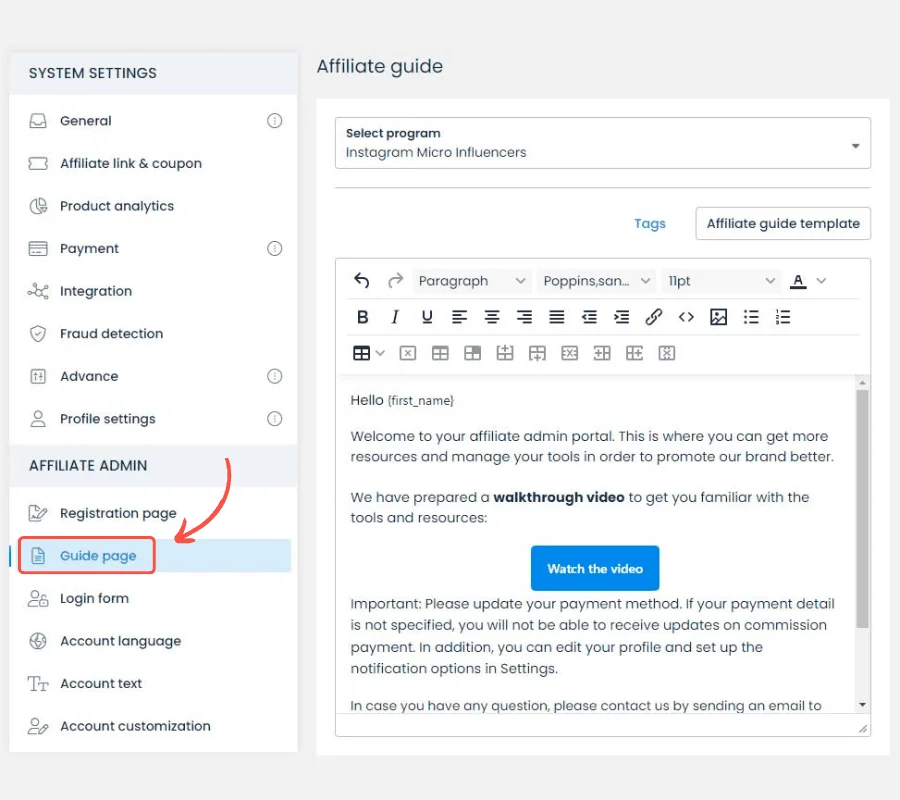
Provide Proper Marketing Materials
Each affiliate type has its own tactics to spread the word about your products.
For example, bloggers are great at writing articles. Influencers focus on posting high-quality images and reels. In the same way, podcasters need well-prepared scripts for their episodes, and cashback sites usually look for eye-catching ad banners to share.
Consider giving them access to pre-made marketing assets. You could curate them based on the type of affiliate. This would save them time and help them promote your brand better.
If you are using UpPromote, you can easily upload scripts and any documents or various media types (images, videos, files, links) by going to Motivation > Media Gallery.
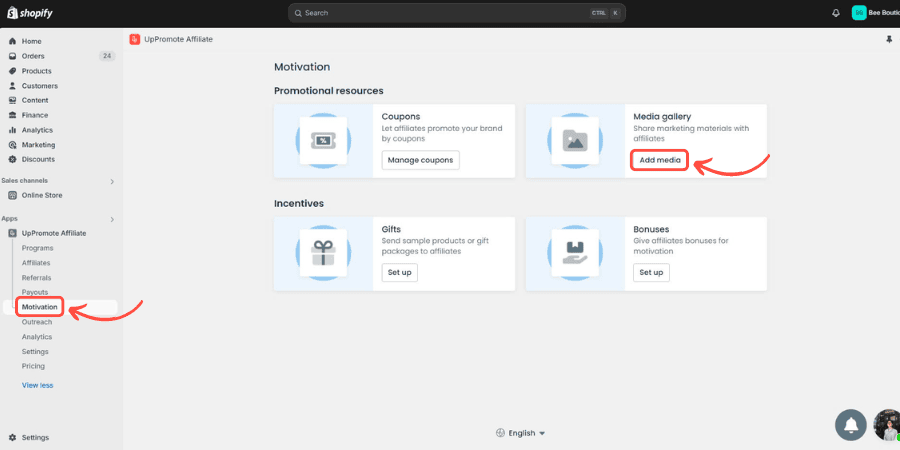
From here, you can add categories to better organize your assets. This will help affiliates access your media faster and easier.
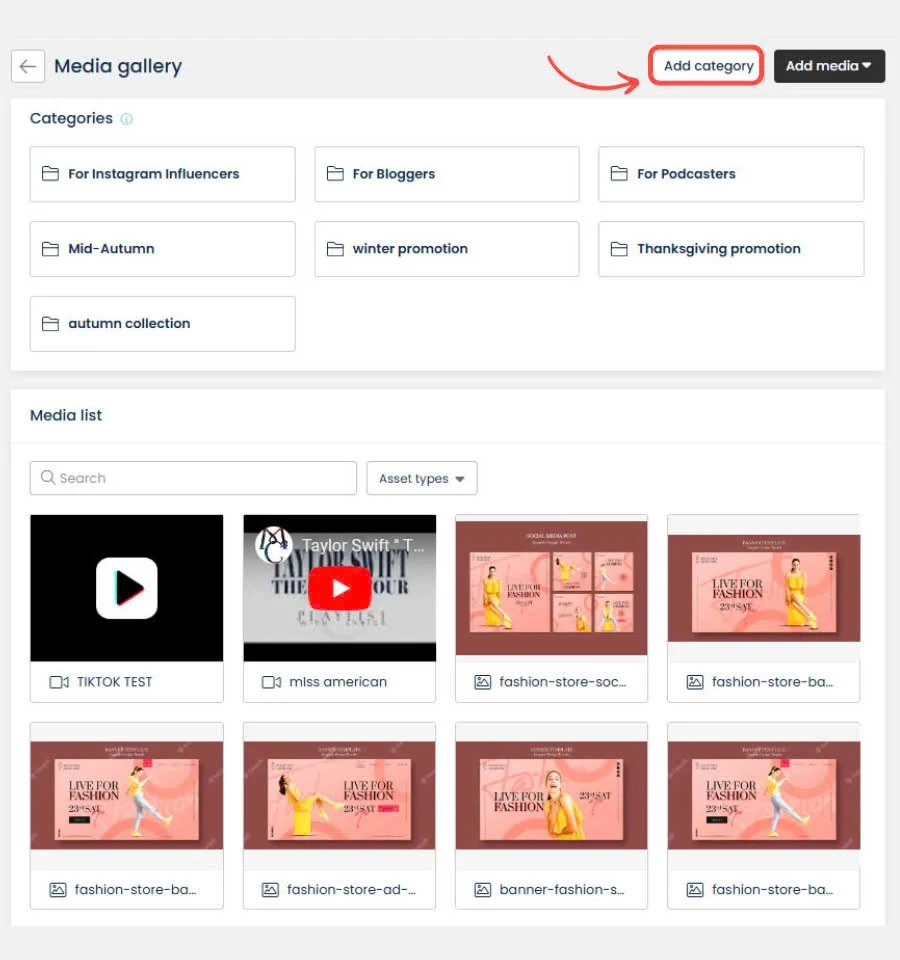
Track and Optimize Affiliate Performance
A key to managing different kinds of affiliates is to track and boost their performance.
Focus on these key metrics to evaluate how successful your partners are being:
- Clicks and traffic
- Sales and revenue
- Conversion rate
- Average order value (AOV)
- Return on investment (ROI)
- Customer lifetime value (CLV)
To get accurate insights, rely on an affiliate tracking solution that delivers real-time data along with comprehensive performance reports and analytics on affiliate performance.
With UpPromote, you can easily track the progress of your affiliate program. Our system enables you to monitor important metrics like the total affiliates, orders, sales, clicks, and commissions. All the data is displayed in easy-to-read graphs, making it simple to analyze your program’s results.
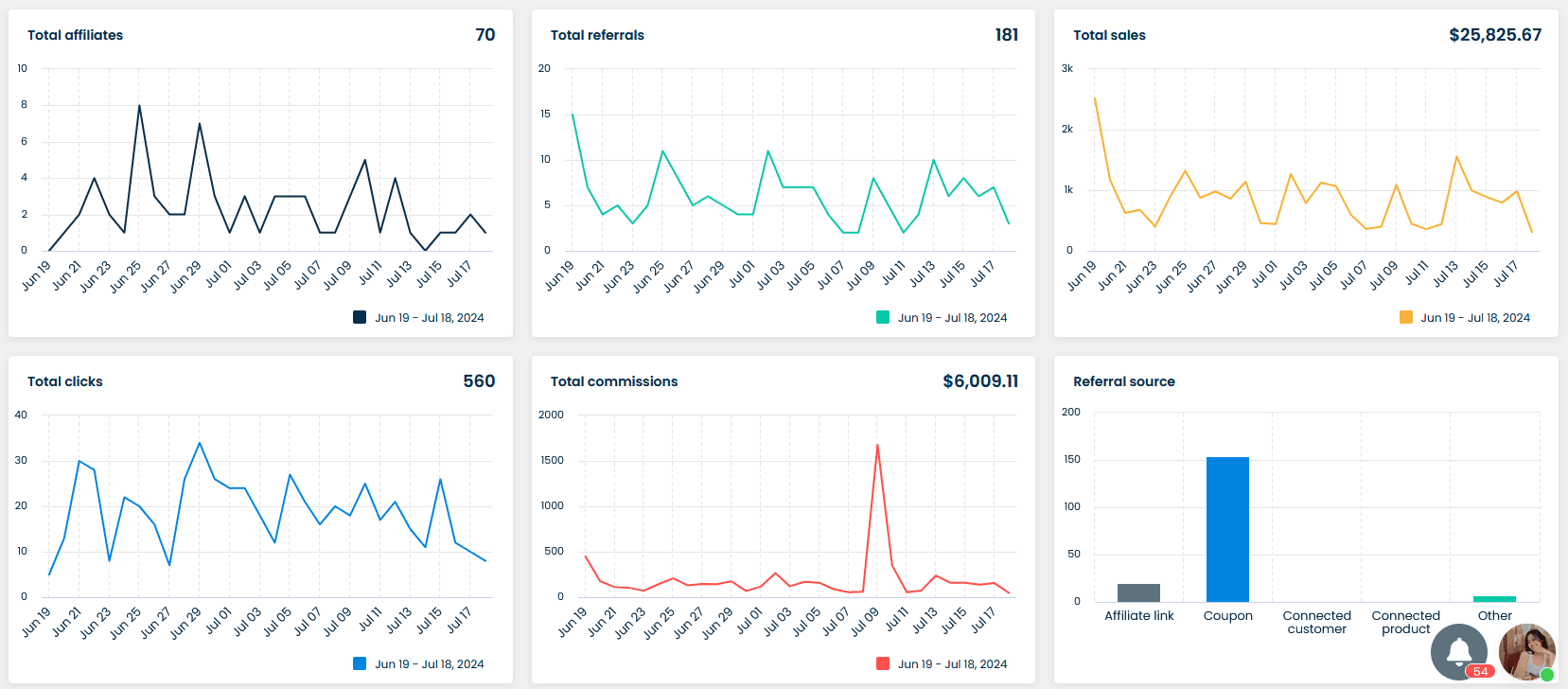
By overseeing affiliate performance, you can identify what works and what doesn’t. Next, you can make data-driven decisions to improve your campaign and foster long-standing relationships, such as:
- Ask affiliates who have not reached their targets about any problems. Provide timely support.
- Adjust incentives depend on each affiliate’s performance to keep them motivated.
- Test different commission types or rates according to each type of partner.
Wrapping up
In summary, we’ve reviewed the most important types of affiliate partners you’ll encounter while running an affiliate program.
Understanding these affiliate types and their characteristics will help you analyze both your current and future partners, allowing you to develop a practical approach to building your program.
Focus your recruitment efforts on the affiliate categories that contribute the most to your sales.


